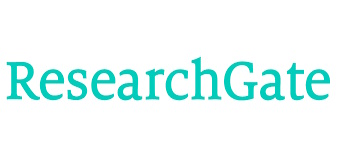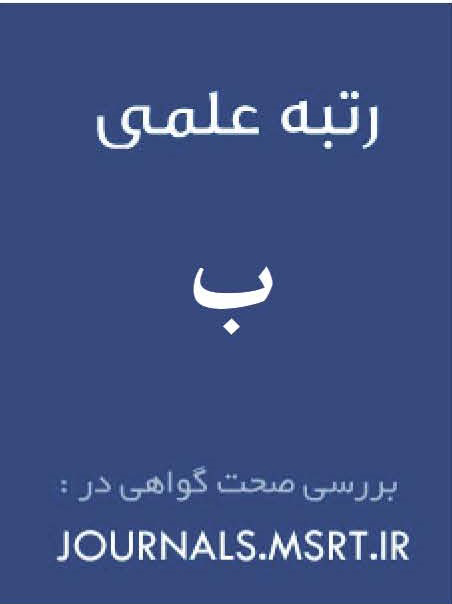اعتباریابی مدل همراستایی بین استراتژیهای فناوری اطلاعات و استراتژیهای کسبوکار از دیدگاه مدیران مدارس متوسطه شهر تبریز
کلمات کلیدی:
همراستایی استراتژیک, فناوری اطلاعات, استراتژی کسبوکار, مدیریت منابع انسانی, امنیت اطلاعات, آموزشوپرورشچکیده
این پژوهش با هدف طراحی و اعتبارسنجی مدلی جامع برای همراستایی استراتژیک میان فناوری اطلاعات و استراتژیهای کسبوکار از منظر مدیران مدارس متوسطه شهر تبریز انجام شد تا عوامل کلیدی اثرگذار و موانع موجود شناسایی و چارچوبی بومی برای مدیریت فناوری در آموزشوپرورش ارائه گردد. پژوهش حاضر به روش ترکیبی (کیفی–کمی) انجام شد. در بخش کیفی، ۱۰ نفر از خبرگان حوزه فناوری اطلاعات و آموزشوپرورش تبریز با نمونهگیری اشباع نظری انتخاب و با مصاحبه نیمهساختاریافته مورد بررسی قرار گرفتند. دادهها از طریق کدگذاری باز، محوری و انتخابی تحلیل شد. در بخش کمی، با استفاده از پرسشنامه محققساخته بر مبنای یافتههای کیفی و ادبیات نظری، از ۲۵۰ مدیر مدارس متوسطه تبریز به روش سرشماری داده گردآوری شد. پایایی ابزار با آلفای کرونباخ و پایایی مرکب و روایی همگرا و واگرا با AVE و معیار فورنل–لاکر تأیید شد. مدل مفهومی با استفاده از معادلات ساختاری و شاخصهای برازش ارزیابی گردید. نتایج نشان داد مدل ارائهشده برازش بسیار مطلوبی دارد (χ²/df=1.79، RMSEA=0.043، GFI=1، AGFI=0.89، NFI=1، GOF=0.911). مدیریت منابع انسانی و امنیت اطلاعات اثر مستقیم و معناداری بر همراستایی استراتژیک فناوری اطلاعات و کسبوکار دارند (β=0.65 و β=0.72). همچنین استراتژیهای کسبوکار پیشبینیکننده معناداری برای توسعه مدیریت منابع انسانی (β=0.28) و امنیت اطلاعات (β=0.35) بودند. مدل طراحیشده میتواند ابزاری علمی و کاربردی برای مدیران و سیاستگذاران آموزشی در جهت برنامهریزی استراتژیک فناوری اطلاعات و یکپارچهسازی آن با اهداف کلان سازمانی باشد و بستر توسعه تحول دیجیتال در مدارس را فراهم کند.
دانلودها
مراجع
Al-Okaily, A., Teoh, A. P., & Al-Okaily, M. (2023). Evaluation of data analytics-oriented business intelligence technology effectiveness: an enterprise-level analysis. Business Process Management Journal, 29(3), 777-800. https://doi.org/10.1108/BPMJ-10-2022-0546
Buchanan, W. (2024). Exploring Value Creation Through Strategic Partnership in Information Technology Companies: A Qualitative Study Touro University Worldwide].
Chen, A., & Roberts, N. (2024). Joint drivers of different shades of green IT/IS practices: a strategic cognition perspective. Information Technology & People, 37(3), 1103-1125. https://doi.org/10.1108/ITP-07-2022-0562
Deilami Azodi, A., Khodadad Hosseini, S. H., Kordnaeij, A., & Meshbaki Esfahani, A. (2020). Conceptualization and explanation of the adaptation model of the business model in the information and communication technology industry. Business Strategies, 33(17), 77-106. https://cs.shahed.ac.ir/article_2451.html?lang=en
Foroughi Kesemi, A., & Daneshjoo, P. (2024). The Role of Open Innovation Strategies and Company/Organization Performance in Market Information Management Capability with the Moderating Role of Technology as an Influential Factor. Scientific Journal of New Research Approaches in Management and Accounting, 8(29), 487-510. https://www.majournal.ir/index.php/ma/article/view/2699
Gandrita, D. M. (2023). Technology and family business: from conceptualization to implementation in strategic planning – a perspective article. Journal of Family Business Management, ahead-of-print(ahead-of-print). https://doi.org/10.1108/JFBM-07-2023-0105
Guntumadugu, V. K. (2025). Generative AI in Financial Services: A Strategic Framework for Digital Transformation. International Journal of Scientific Research in Computer Science Engineering and Information Technology, 11(1), 1553-1559. https://doi.org/10.32628/cseit251112145
Jabbarzadeh, G., & Niknam, M. (2022). The impact of alignment between business strategies, information technology, and marketing on firms' operational performance. Journal of Management Science Research, 4(11), 124-135. https://www.noormags.ir/view/en/articlepage/1972091/
Kalantari, F. (2024). Presenting and validating an educational justice model based on information and communication technology with a blended learning approach in education. Journal of Technology in Entrepreneurship and Strategic Management, 4(3). https://doi.org/10.61838/kman.jtesm.3.4.11
Mohammadi, A., Rezaei, S., & Nikzad, H. (2024). The Impact of Artificial Intelligence Technologies on Improving Strategic Decision-Making in Knowledge-Based Organizations: The Mediating Role of Organizational Innovation. Journal of Information Technology Management in Iran, 15(4), 245-270.
Parsakia, K., & Jafari, M. (2023). Strategies for Enhancing Customer Engagement Using Artificial Intelligence Technologies in Online Markets. Journal of Technology in Entrepreneurship and Strategic Management (JTESM), 2(1), 49-69. https://doi.org/10.61838/kman.jtesm.2.1.6
Pitoyo, B. S., Widyastuti, T., Ahmar, N., Daito, A., & Harnovinsah, H. (2023). Networking Analysis, Adoption of Accounting Information Technology, Dynamic Capabilities on Organizational Performance With Corporate Strategy As Moderating Variables. International Journal of Social Science, 3(2), 163-172. https://doi.org/10.53625/ijss.v3i2.6300
Safardoust, A., Pourqasem sostani, M., & Salami, R. (2023). Identifying strategic components affecting the position of small home appliance industry. Journal of Strategic Management Studies, 14(53), 1-24. https://doi.org/10.22034/smsj.2023.169392
Sedigh Pourmand, M., Hakkak Zadeh, M., & Manouchehrinejad, M. (2023). Designing a Strategic Decision-Making Model Based on Information and Communication Technology in the Physical Education Department of the Ministry of Education. Communication Management in Sports MediaVL - 11(1), 78-89. https://civilica.com/doc/1767625/
Shadbakhs, A. (2023). Examining the Impact of Implementing Sustainable Marketing Strategies on the Performance of Digital Businesses with the Mediating Role of Information Technology in the Real Estate Industry in Iran. Proceedings of the Fifth National Conference and Second International Conference on New Business Management Models in Unstable Conditions, Tehran.
Shahreki, J. (2024). Adopting Human Resource Information System and Work-Related Outcomes in Emerging Market SMEs: Unified Theory of Acceptance and Use of Technology. Cross Cultural & Strategic Management, 31(1), 116-142. https://doi.org/10.1108/ccsm-09-2022-0144
Son, I., & Kim, S. (2022). Supply Chain Management Strategy and Capital Structure of Global Information and Communications Technology Companies. Sustainability, 14(3), 1844. https://doi.org/10.3390/su14031844
Tang, C., Mao, S., Naumann, S. E., & Xing, Z. (2022). Improving student creativity through digital technology products: A literature review. Thinking Skills and Creativity, 44, 101032. https://doi.org/10.1016/j.tsc.2022.101032
Touriano, D., Sutrisno, S., Kuraesin, A. D., Santosa, S., & Almaududi Ausat, A. M. (2023). The Role of Information Technology in Improving the Efficiency and Effectiveness of Talent Management Processes. Jurnal Minfo Polgan, 12(1), 539-548. https://doi.org/10.33395/jmp.v12i1.12454
Yazdani, A., & Darbani, S. (2022). The Impact of Cloud Technology on Strategic Management and Organizational Flexibility. Journal of Technology in Entrepreneurship and Strategic Management, 1(1), 12-20. https://www.journaltesm.com/article_192386.html
Zhen, X., & Zhen, L. (2024). Accounting Information Systems and Strategic Performance: The Interplay of Digital Technology and Edge Computing Devices. Journal of Grid Computing, 22(1), 5. https://doi.org/10.1007/s10723-023-09720-8
دانلود
چاپ شده
ارسال
بازنگری
پذیرش
شماره
نوع مقاله
مجوز
حق نشر 2025 Mohamadreza Kazemimehr (Author); Roghayeh Vahdat ; Maryam Sameri (Author)

این پروژه تحت مجوز بین المللی Creative Commons Attribution-NonCommercial 4.0 می باشد.






